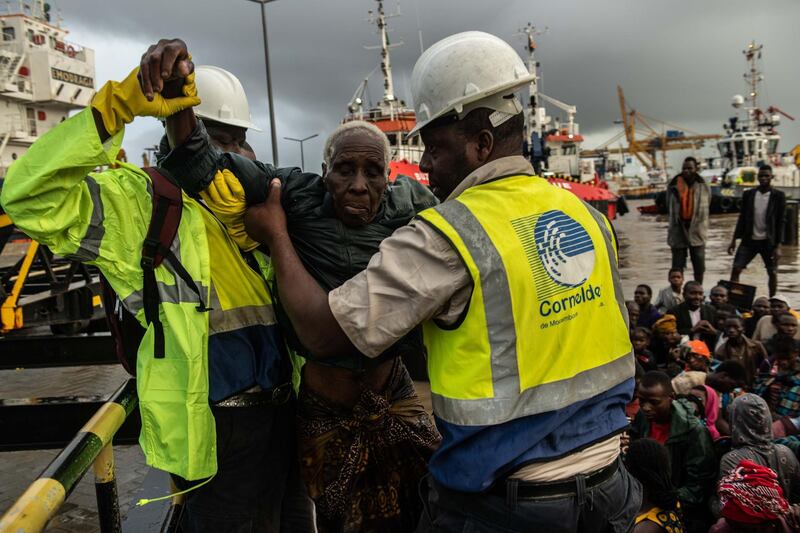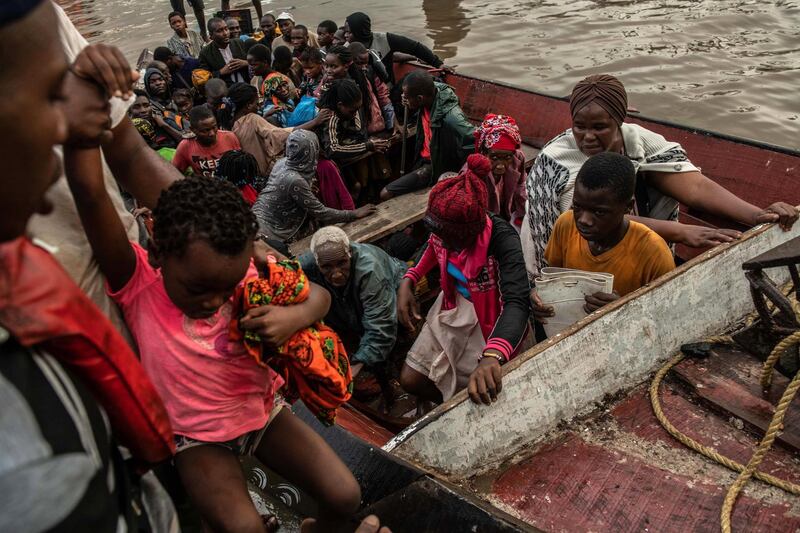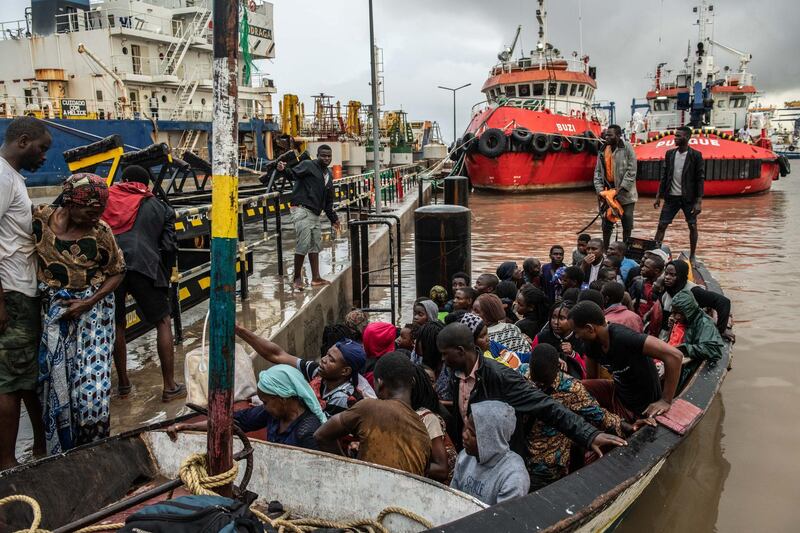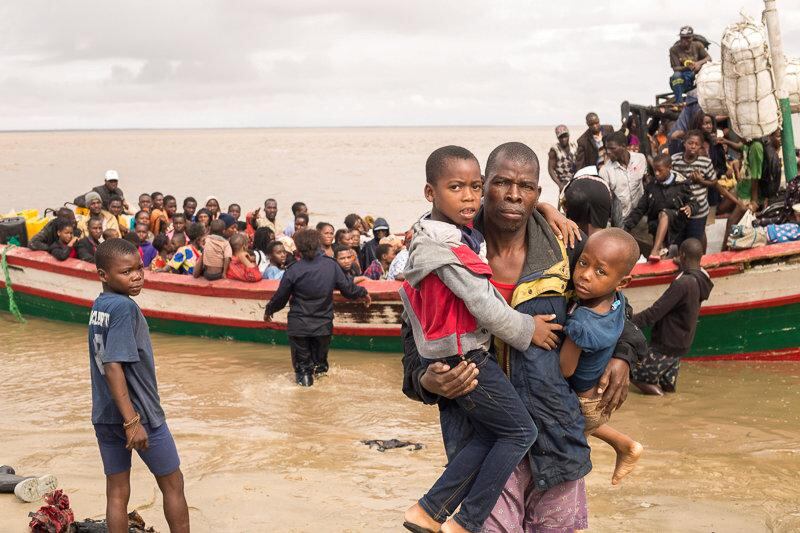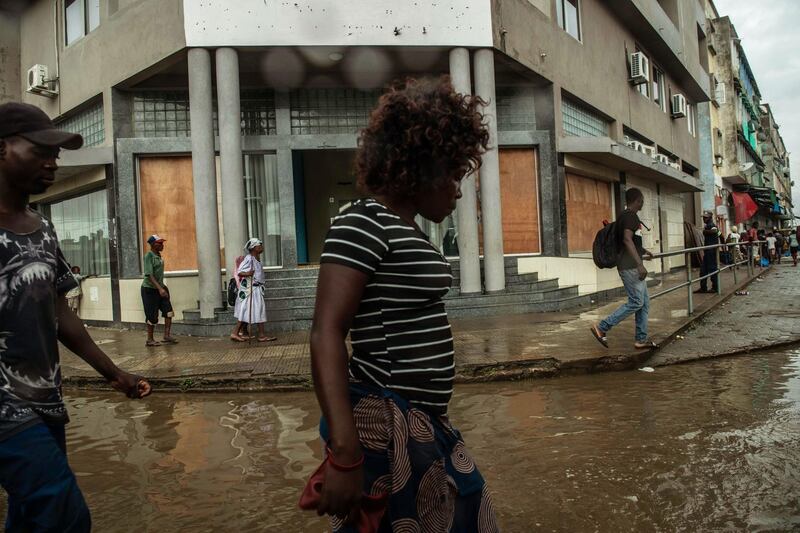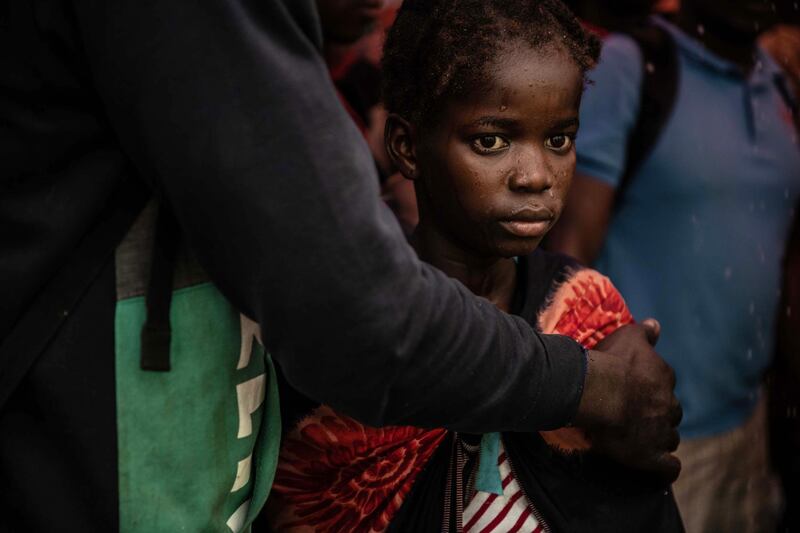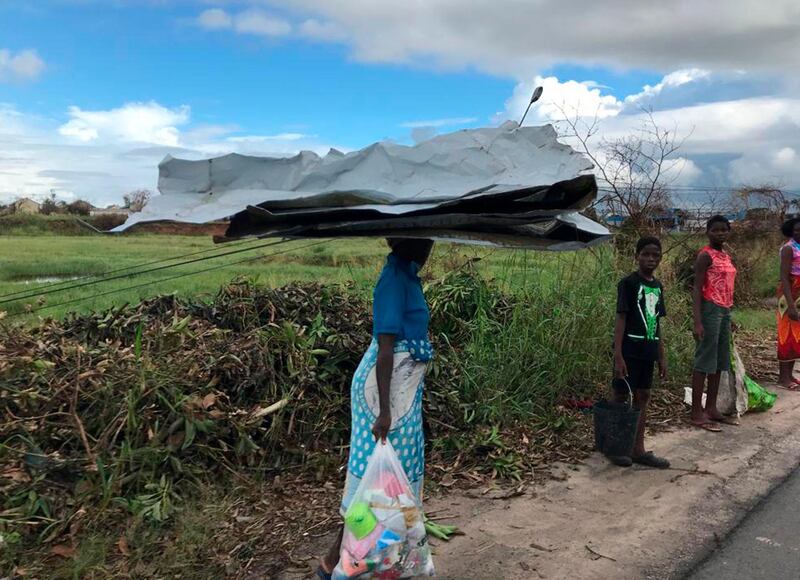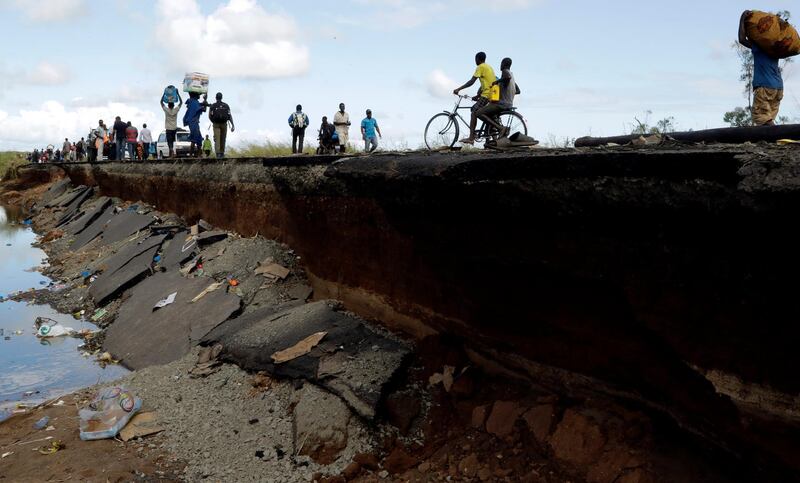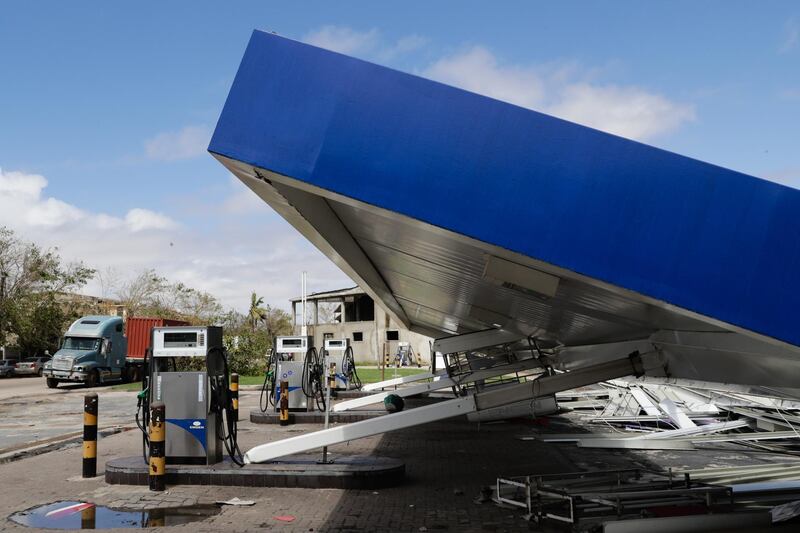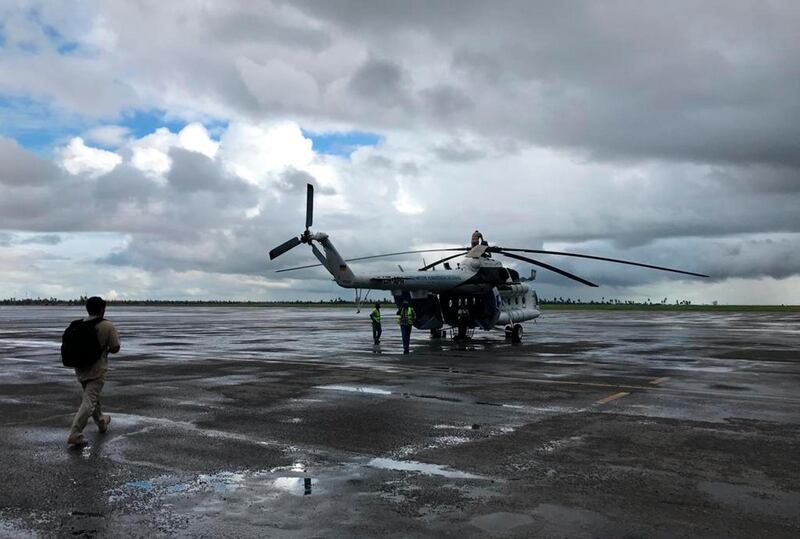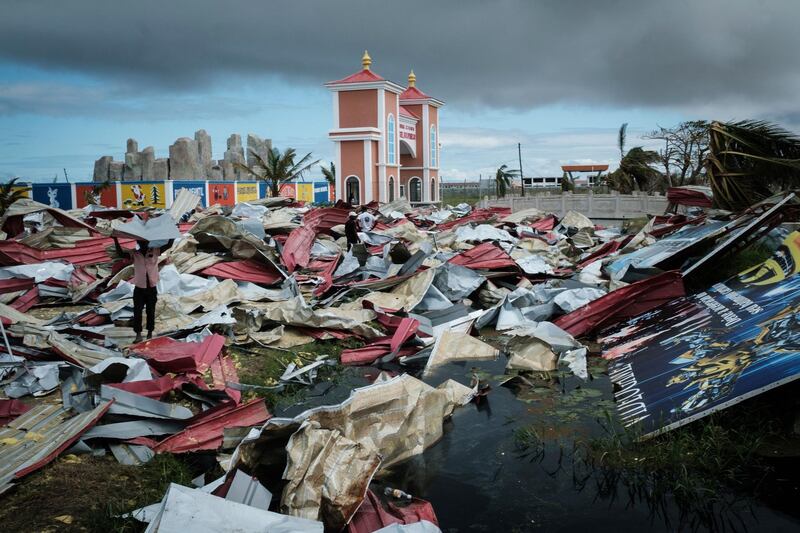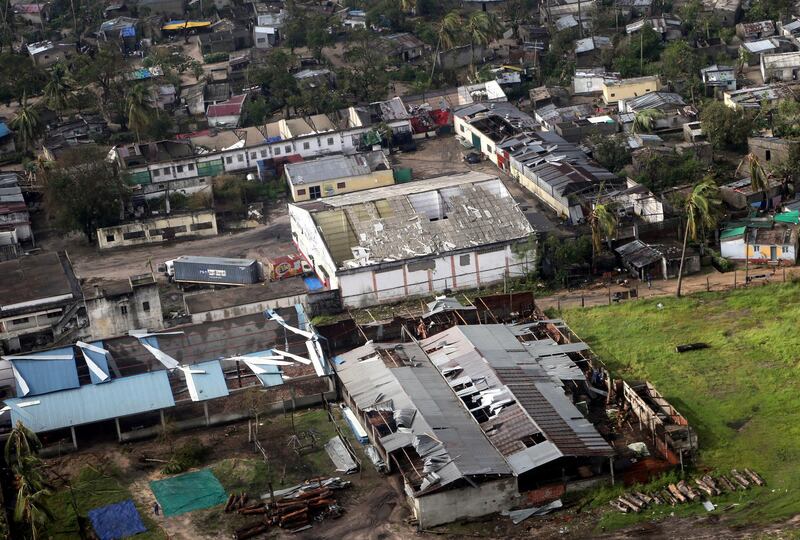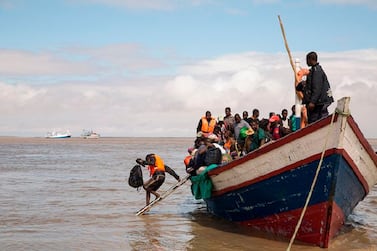Survivors of Cyclone Idai in Mozambique are facing "horrendous" conditions, according to a senior Red Cross official who said that receding flood waters could reveal a death toll even higher than the 1,000 predicted by the country's president.
Elhadj As Sy, secretary-general of the International Federation of Red Cross and Red Crescent Societies, said there was need for more humanitarian assistance to cope with the aftermath of the storm.
"They are nowhere near the scale and magnitude of the problem," Mr As Sy said. "And I fear we will be seeing more in the weeks and months ahead, and we should brace ourselves."
Thousands of people were making a grim voyage toward the city of Beira, which although 90 per cent destroyed has become a centre for frantic rescue efforts throughout the region.
Some walked along roads carved away by the raging waters a week ago. Hundreds of others were ferried in by local fishermen who plucked stranded people from small islands created by the flooding.
Helicopters set off into the rain for another day of seaching for people who need rescuing.
For those who reach Beira with their few remaining possessions, life is grim. Waterborne diseases are a growing concern as water and sanitation systems were largely destroyed.
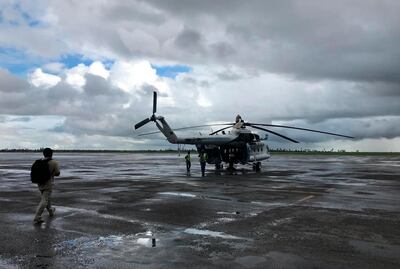
"The situation is simply horrendous, there is no other way to describe it," Mr As Sy said after touring transit camps for the growing number of displaced. "Three thousand people who are living in a school that has 15 classrooms and six, only six, toilets. You can imagine how much we are sitting on a water and sanitation ticking bomb."
He said what moved him the most was the number of children without their parents, separated in the chaos or newly orphaned.
The official death toll from the storm in Mozambique was 242, with another 15,000 people still missing. Neighbouring Zimbabwe recorded 142 deaths while Malawi reported about 56 killed.
"Yesterday [we] did a reconnaissance and we found another [inland] lake. So we are still very early in the phase of identifying what the scope of this is, for who is affected and how many are lost," said Emma Batey, co-ordinator for the consortium of Oxfam, CARE and Save the Children.
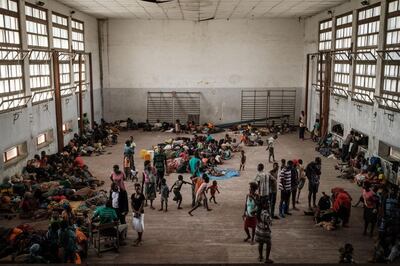
She estimated that another 100 people would be airlifted out on Friday: "We're only picking up those in absolute dire need."
Pedro Matos, emergency co-ordinator for the World Food Programme, said that what rescuers are seeing now is "sometimes it's just a hut completely surrounded by water".
"If islands are big enough, we can even see smoke coming out, meaning that they're cooking," he said, adding that it remains "super difficult" to estimate a death toll or even the number of missing.
For residents of Beira, life staggered on. People salvaged the metal strips of roofs that had been peeled away by the storm. Downed trees littered the streets. And yet there were flashes of life as it used to be. White wedding dresses stood pristine behind a shop window that had not been shattered.
Zimbabwe was also affected by the cyclone and as roads began to clear and some basic communications were set up, a fuller picture of the extent of the damage there was beginning to emerge.
The victims are diverse: a mother buried in the same grave with her child, headmasters missing together with dozens of school students, illegal gold and diamond miners swept away by raging rivers and police officers washed away with their prisoners.
The Ministry of Information said 30 pupils, two headmasters and a teacher were missing.
Zimbabwean President Emmerson Mnangagwa said on Thursday that officers and prisoners were washed way.
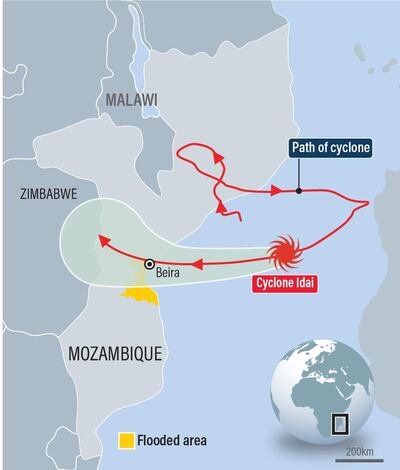
In Mutare, fear gripped residents even though they were more than 140 kilometres from Chimanimani, the worst-hit part of Zimbabwe.
Maina Chisiriirwa, a city resident, said she buried her son-in-law, who had left the city to go to the Chiadzwa diamond fields to mine illegally.
"There are no jobs and all he wanted was to feed his family. He was with his colleagues. They thought it would be easier to mine since the rains would keep the guards and the police away from patrolling," Ms Chisiriirwa said. His colleagues survived but her son-in-law was swept away, she said.
A man who travelled several kilometers to a centre for survivors in Chimanimani said several of his colleagues were swept away as they tried to cross a river while fleeing from a mountain known for rich gold deposits and frequented by hordes of illegal miners.
